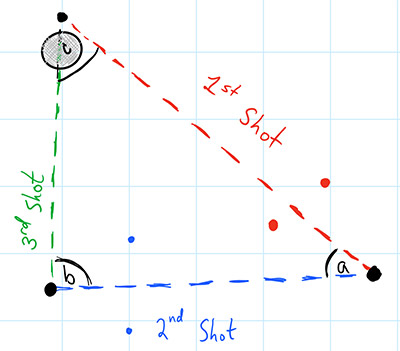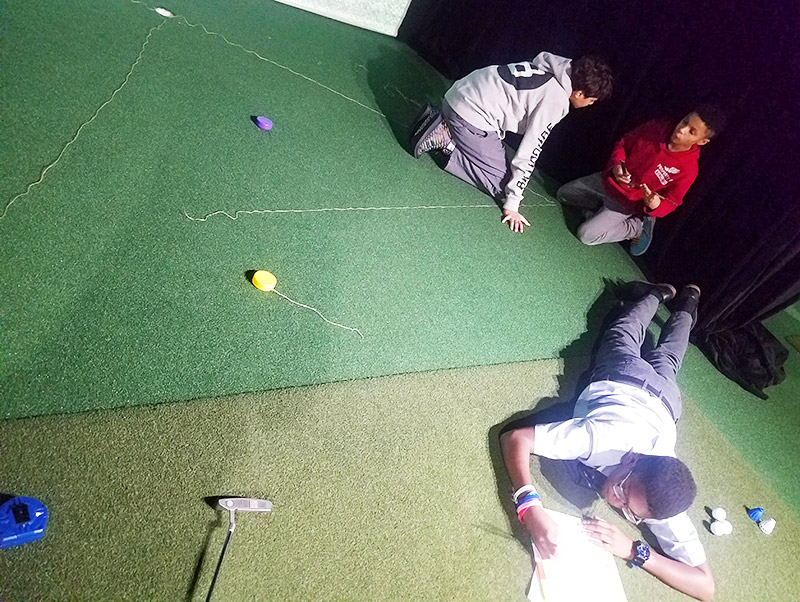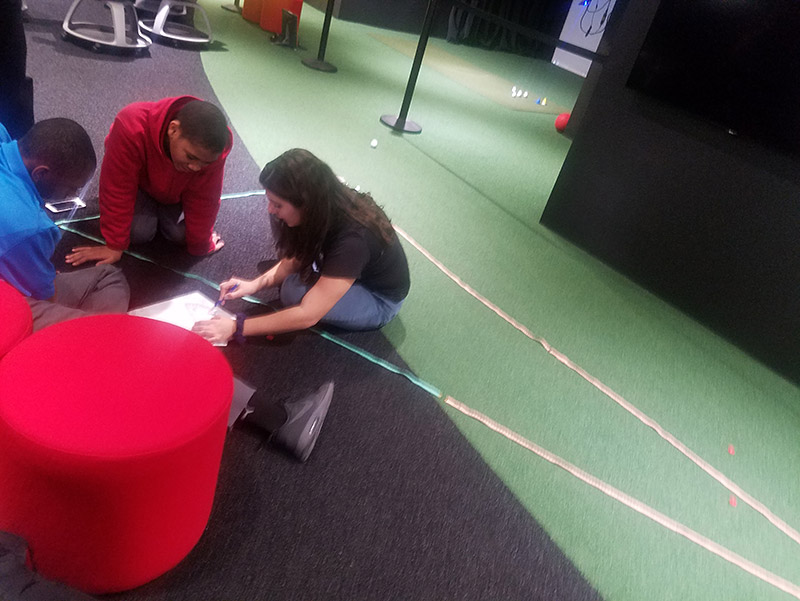By Veeshan Narinesingh, STEM Program Co-Leader
In our most recent STEM inquiry, our after school students calculated the area of a triangle as a measure of putting accuracy.

In this example, we see the three targets — two red dots, two blue dots, and the hole — as well as black dots to indicate where each putt stopped. Students measured all three sides and the a and b angles before calculating the area and the c angle.
For this exercise, we divided into groups and laid out triangular putting circuits on the floor. The first putt went from the hole to a spot marked by two tees at least six feet away. The second putt went to another gate, and the third went back to the hole to complete the triangle.
With this triangular course established, the players went through it and tried to hit the targets. They measured the actual length of each of their putts and two of the angles between them. In addition, they measured the altitude, or height, of their triangles, and how many putts it took to complete the course.
After measuring their triangles on the ground, the students drew them to scale and computed the area as well as the third angle. We saw that those who came closest to the targets had the shortest sides to their triangles, and thus the smallest areas.
Through lessons like these, our STEM lab helps our students apply mathematics to the physical world. They experience rather than observe, which leads to a deeper understanding of the concepts we study.

Michael Alameda, top left, and Christopher Chatman measure Alameda’s first angle as Xavier Partee records its value.

STEM Program Assistant Tiffani Kolozian helps Yohance Whyte, left, and Jason Johnson through a sample calculation.